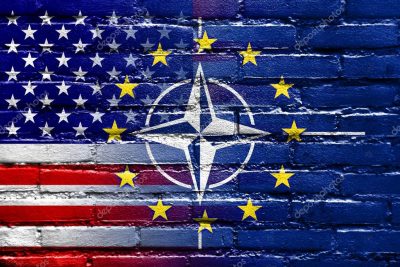NATO Expansionism in Europe

All Global Research articles can be read in 51 languages by activating the “Translate Website” drop down menu on the top banner of our home page (Desktop version).
To receive Global Research’s Daily Newsletter (selected articles), click here.
Visit and follow us on Instagram at @globalresearch_crg.
***
“NATO’s enlargement in the last decades has been a great success and has also paved the way for a further enlargement of the EU”: this was reiterated last Saturday at the Munich Security Conference by NATO Secretary General Jens Stoltenberg. In order to fully understand his words, it is necessary to reconstruct this “great success” story in its essential terms.
It begins in the same year – 1999 – in which NATO demolishes Yugoslavia with war and, at the Washington summit, announces that it wants to “conduct crisis response operations, not provided for in Article 5, outside Alliance territory”. Forgetting that it had committed itself to Russia “not to expand even one inch to the East”, NATO began its expansion to the East. It includes the first three countries of the former Warsaw Pact: Poland, Czech Republic and Hungary. Then, in 2004, it extends to seven more: Estonia, Latvia, Lithuania (formerly part of the USSR); Bulgaria, Romania, Slovakia (formerly part of the Warsaw Pact); Slovenia (formerly part of the Yugoslav Federation). In 2009, NATO incorporates Albania (formerly a member of the Warsaw Pact) and Croatia (formerly part of the Yugoslav Federation); in 2017, Montenegro (formerly part of Yugoslavia); in 2020, North Macedonia (formerly part of Yugoslavia) In twenty years, NATO expands from 16 to 30 countries.
In this way, Washington achieves a triple result. It extends the military alliance close to Russia, even inside the territory of the former USSR, and maintains the levers of command: the Supreme Allied Commander in Europe is, “by tradition”, always a US general appointed by the US president and the other key commands also belong to the US. At the same time, Washington ties the Eastern countries not so much to the Alliance, but directly to the US. Romania and Bulgaria, as soon as they entered, immediately made available to the United States the important military bases of Constanta and Burgas on the Black Sea. The third result obtained by Washington with the enlargement of NATO to the East is the strengthening of its influence in Europe. Out of the ten Central-Eastern European countries that joined NATO between 1999 and 2004, seven joined the European Union between 2004 and 2007: the United States superimposed NATO on the EU, which expanded to the East, over Europe.
Today 21 of the 27 countries of the European Union belong to NATO under US command. The North Atlantic Council, the Alliance’s political body, according to NATO rules decides not by majority but always “unanimously and by common accord”, i.e. in agreement with what is decided in Washington. The participation of the major European powers in these decisions (excluding Italy, which obeys by keeping silent) generally takes place through secret negotiations with Washington on give and take. This involves a further weakening of European parliaments, in particular the Italian one, already deprived of real decision-making powers on foreign and military policy.
In this framework, Europe finds itself today in an even more dangerous situation than during the Cold War. Three other countries – Bosnia Herzegovina (formerly part of Yugoslavia), Georgia and Ukraine (formerly part of the USSR) – are candidates to join NATO. Stoltenberg, spokesman for the US before NATO, declares that “we keep the door open and if the Kremlin’s goal is to have less NATO on Russia’s borders, it will only get more NATO.”
In the US-NATO escalation, clearly directed to explode a large-scale war in the heart of Europe, nuclear weapons come into play. In three months, the U.S. begins mass production of the new B61-12 nuclear bombs, which will be deployed under U.S. command in Italy and other European countries, probably also in the East even closer to Russia. In addition to these, the U.S. has in Europe two land bases in Romania and Poland and four warships equipped with the Aegis missile system, capable of launching not only anti-missile missiles but also cruise missiles with nuclear warheads. They are also preparing intermediate-range nuclear missiles to be deployed in Europe against Russia, the invented enemy that can, however, respond destructively if attacked.
To all this is added the economic and social impact of growing military spending. At the meeting of defense ministers, Stoltenberg triumphantly announced that “this is the seventh consecutive year of increased defense spending by European Allies, increased by $270 billion since 2014.” More public money diverted from social spending and productive investment, while European countries have yet to recover from the 2020-21 economic lockdown. Italian military spending has exceeded 70 million euros per day, but it’s not enough. Prime Minister Draghi has already announced “We must provide ourselves with a more significant defense: it is very clear that we will have to spend much more than we have done so far”. Very clear: let’s tighten our belts so that NATO can expand.
*
Note to readers: Please click the share buttons above or below. Follow us on Instagram, @globalresearch_crg. Forward this article to your email lists. Crosspost on your blog site, internet forums. etc.
This article was originally published in Italian on Il Manifesto.
Manlio Dinucci, award winning author, geopolitical analyst and geographer, Pisa, Italy. He is a Research Associate of the Centre for Research on Globalization (CRG).

